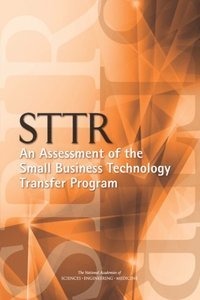
Liknande böcker
STTR: An Assessment of the Small Business Technology Transfer Program
Bok av Engineering National Academies Of Sciences And Medicine
Today's knowledge economy is driven in large part by the nation's capacity to innovate. One of the defining features of the U.S. economy is a high level of entrepreneurial activity. Entrepreneurs in the United States see opportunities and are willing and able to assume risk to bring new welfare-enhancing, wealth-generating technologies to the market. Yet, although discoveries in areas such as genomics, bioinformatics, and nanotechnology present new opportunities, converting these discoveries into innovations for the market involves substantial challenges. The American capacity for innovation can be strengthened by addressing the challenges faced by entrepreneurs. Public-private partnerships are one means to help entrepreneurs bring new ideas to market. The Small Business Technology Transfer (STTR) and the Small Business Innovation Research (SBIR) program form one of the largest examples of U.S. public-private partnerships. In the SBIR Reauthorization Act of 2000, Congress tasked the National Research Council with undertaking a comprehensive study of how the SBIR program has stimulated technological innovation and used small businesses to meet federal research and development needs and with recommending further improvements to the program. When reauthorizing the SBIR and STTR programs in 2011, Congress expanded the study mandate to include a review of the STTR program. This report builds on the methodology and outcomes from the previous review of SBIR and assesses the STTR program.







